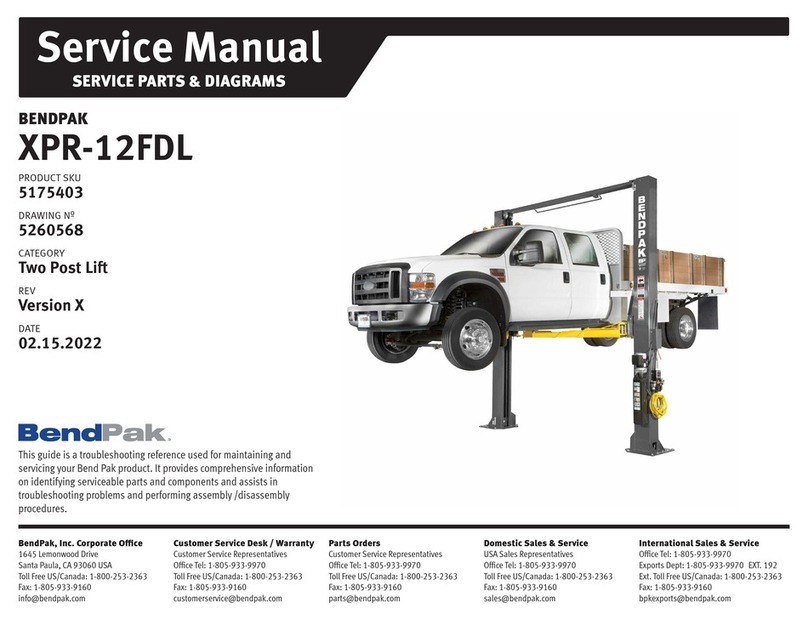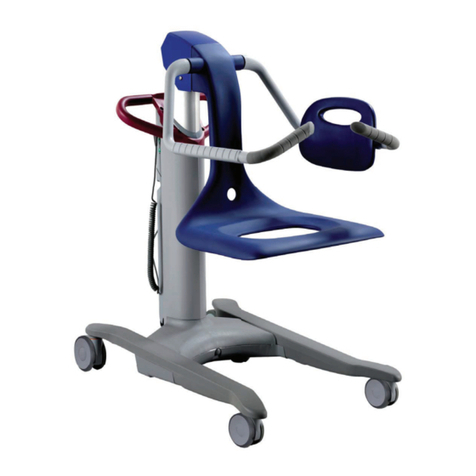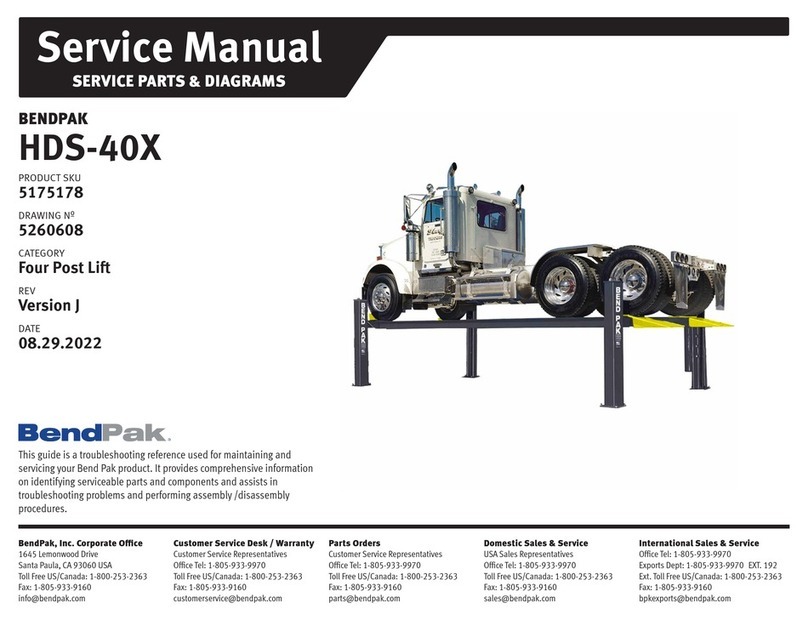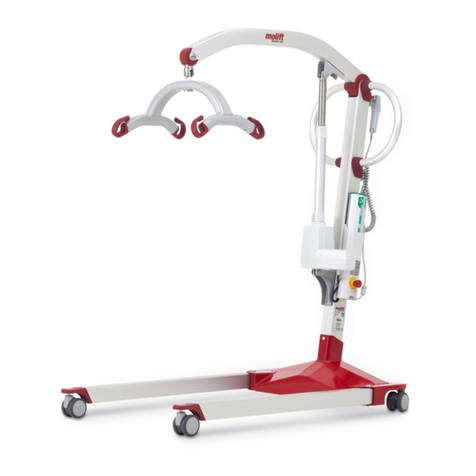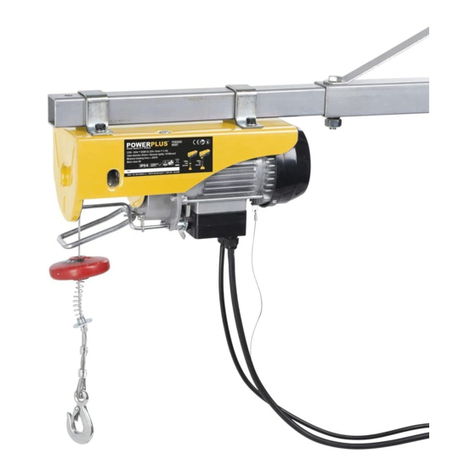Champion Autolift FP8000 User manual

FP8000 Installation Manual

ATTENTION
Please follow these instructions. The installation of your
lift will take 4-5 hours. Do not rush. Take your time and
do the job right. Use proper lifting devices and
techniques to assemble the lift.
1. Do not attempt to use the power unit to extend your
cylinder. This must be done manually.
2. If you do not know how to wire your motor, get
professional help.
3. Make sure all cables are on pulleys before operating
your lift.
4. Always lower your lift onto the safety locks; this will
protect your power unit. Your power unit will not
raise a car while the pump is loaded.
5. Before using your lift, lubricate the inside of the four
columns. WD-40 or spray silicone lubricant works
best.
6. Do not over tighten the hydraulic fittings.
We are here to help. If you have any questions during
assembly – please give us a call. 800.844.9608
2

IMPORTANT SAFETY INSTRUCTIONS
Read these safety instructions entirely!
Failure to read these instructions may result in injury to user, other people
within the area of the lift, or vehicles. We are not responsible for any injury
or damage as a result of neglecting to carefully read and follow these
instructions.
Always lock the lift in place before going under the vehicle. Never allow
anyone to go under the lift when raising or lowering.
INSPECT your lift daily. Never operate if it malfunctions or if is has broken
or damaged parts. Repairs should be made with original equipment parts.
Routine check of safety latch system is very important - the discovery of
device failure before needed could save you from expensive property
damage, lost production time, serious personal injury and even death.
Operating controls are designed to close when released. Do not block
open or override them.
NEVER overload your lift. Manufacturer’s rated capacity is shown on
nameplate affixed to the lift. ALWAYS know the gross weight of vehicle.
NEVER use the lift to raise one end or one side of vehicle.
NEVER raise vehicle with anyone inside it. No one should be in the lift area
during operation.
ALWAYS keep lift area free of obstructions, grease, oil, trash and other
debris. Before lowering lift, be sure tool trays, stands, etc. are removed
from under vehicle. Release locking devices before attempting to lower lift.
Adequate ventilation should be provided when working on internal
combustion engines.
Use only manufacturer’s recommended attachments.
KEEP HANDS AND FEET CLEAR. Remove hands and feet from any moving
parts. Keep feet clear of lift when lowering. Avoid pinch points.
GUARD AGAINST ELECTRIC SHOCK. This lift must be grounded while in
use to protect the operator from electric shock.
3

DANGER! The power unit used on this lift contains high voltage.
Disconnect power at the receptacle before performing any electrical
repairs. Secure plug so that it cannot be accidentally plugged in during
service.
WARNING! RISK OF EXPLOSION. This equipment has internal arcing or
sparking parts which should not be exposed to flammable vapors. This
machine should not be located in a recessed area or below floor level.
MAINTAIN WITH CARE. Keep lift clean for better and safe performance.
Follow manual for proper lubrication and maintenance instructions. Keep
control handles and/or buttons dry, clean and free from grease and oil.
STAY ALERT. Watch what you are doing. Use common sense. Be aware.
CHECK FOR DAMAGED PARTS. Check for alignment of moving parts,
breakage of parts or any condition that may affect its operation. Do not use
lift if any component is broken or damaged.
NEVER remove safety related components from the lift. Do not use lift if
safety related components are damaged or missing.
ALWAYS wear safety glasses. Every day eyeglasses only have impact
resistant lenses. They are not safety glasses.
READ AND UNDERSTAND ALL SAFETY WARNINGS & PROCEDURES
BEFORE OPERATING LIFT.
POST THESE SAFETY TIPS WHERE THEY WILL BE A CONSTANT
REMINDER TO YOUR LIFT OPERATOR. FOR INFORMATION SPECIFIC TO
THE LIFT, ALWAYS REFER TO THE LIFT MANUFACTURER’S MANUAL.
Improper installation can cause accelerated
wear, resulting catastrophic failure which
may cause property damage and / or bodily
injury. Manufacturer will assume no liability
for loss or damage of any kind, expressed
or implied, resulting from improper
installation or use of this product. Read this
4

installation manual in its entirety before
attempting to install or operate the lift.
SELECTING SITE: Before installing your new lift, check the following.
OVERHEAD OBSTRUCTIONS: The area where the lift will be located should be
free of overhead obstructions such as heaters, building supports, electrical lines
etc.
FLOOR REQUIREMENTS: Visually inspect the site where the lift is to be
installed and check for cracked or defective concrete. This lift must be installed
on a solid level concrete floor with no more than 2 degrees of slope. A level floor
is suggested for proper installation and level lifting. If a floor is of questionable
slope, consider a survey of the site and/or the possibility of pouring a new level
concrete slab. This lift is designed to be installed on a minimum of 4” thick,
3500psi, steel reinforced concrete. Do not install this lift on asphalt, wood, or
any other surface other than described. This lift is only as strong as the
foundation on which it is installed.
DO NOT install this lift outdoors unless special consideration has been made to
protect the power unit from weather conditions.
DO NOT begin installation with lift close to wall. It is necessary to leave
adequate clearance for installing safety linkage rods. Allow 60” for clearance.
(See Fig.1)
NOTE The power unit can be placed in one of two locations, front left or rear
right (See Fig. 1)
Unpacking: Unpacked the lift close to the installation site. Layout a chalk line
on the floor following the floorplan (See Fig.1).
Stand the columns in place making sure to position the power unit mounting
bracket at the correct location and the lock blocks facing outward.
TOOLS recommended
"Rotary Hammer Drill Or Similar ( If Anchoring ) "Medium Crescent Wrench
"3/4" Masonry Bit ( If Anchoring / Not required) "Medium Pipe Wrench
"Hammer "Crowbar
"4 Foot Level "Chalk Line
"Open-End Wrench Set: 7/16" - 1-1/8" "Medium Flat Screwdriver
"Socket And Ratchet Set: 7/16" - 1-1/8" "Tape Measure: 25 Foot Minimum
"Hex-Key / Allen Wrench Set "Needle Nose Pliers
5

COLUMN & CROSSRAIL INSTALLATION Lay down rear columns. Position the
crossrail at the top of the two columns. (both cross rails are the same ) Install
the crossrail in the column by sliding the plastic guide blocks into the column
channel. The safety latch must be positioned with bevel side to the leg top, and
safety latch facing towards the outside of the lift when you stand the columns
back up. Manually open the safety latch device on each side of the crossrail and
slide the crossrail down until it rests on the safety lock position closest to the
floor. Repeat the procedure for the remaining columns and crossrail. Stand the
assembled columns up in the positions indicated on the floor plan.
Track Installation
Start with the track with the cylinder. This track will be located with the hose
connection facing out toward the leg with power unit bracket attached. NOTE
The power unit can be located in two locations shown. With an assistant, pick
up and place one end of the main side track on the crossrail, and then pick up
and place the other end on the opposite crossrail (if you have three assistants,
place both ends at the same time). Use a large screwdriver or aligning punch to
align the mounting holes in the cross rails with the mounting holes in the track.
Do not leave the tracks unbolted – install the mounting bolts immediately!
Install 1/2” x 4” mounting bolts and 1/2” washers thru the ramp brackets and
wheel stops. Make sure the bolt head is on the flat side of the bracket. Install the
two ramp brackets and two wheel stop with bolts and washers as you secure
the main side track to the cross rail. Secure the bolts with 1/2” washers and nuts
placed hand tight. Now, install the offside track and again secure with ramp
6

brackets, wheel stops with 1/2” x 4” bolts and nuts. After both tracks are
installed, tighten all bolts 1/2” x 4” bolts - torque - 45 ft-lbs.
Find the leg caps (4 each), 1/2” x 7” bolts (4 each), 1/2” x 1 1/4” bolts (4
each), 1/2” nuts (8 each) and 1/2 “ flat washers (16 each), holes for cable
face towards the center of the lift. Secure the leg caps with 1/2” x 1 1/4” bolts.
Place the bolts with washers in through channel and secure with washers and
nuts on the outside of the leg. Install the 1/2” x 7” bolts through the leg and top
cap. Install from outside of the leg, and secure with a nut on the inside of the
leg. Tighten the 1 1/4” bolt. Tighten the 7” bolt to a torque of 45 ft-lbs. Do not
over tighten the 7” bolt, as this may warp the column channel and bind the
guide blocks.
1) The cables are already strung and ready to attach to the top of legs. Before
doing this you must extend the chrome rod out of the cylinder far enough for the
cables to reach. If you have the lift on the lowest lock you will need to extend
the cable approximately 60 inches.
DO NOT USE THE POWER UNIT TO EXTEND THE CYLINDER
Make sure both parts on the cylinder are open to allow the easy flow of air.
Manually or with a device such as a come along, pull the cylinder out 60 inches.
Although the cylinder may be difficult to move at first, it is usually much easier
once you get the first movement.
If you have a compressor you can use air to extend the cylinder. Place the air
Into the back port, (the port away from the chrome rod) and blow air into the
cylinder.
7

After you have extended the chrome rod, attach the cable to the top caps in the
legs. Make sure each cable is on the pulleys. Place both nuts on top of the top
cap and tighten them together.
Safety Latch Linkage Installation: Locate and identify the components needed
to install the safety latch linkage rods. Install the spacers from on the straight
threaded end of the 1/2” x 50” (1/2” x 70” for the XLT) bent rod and the
threaded end of the 1/2” x 126” straight safety latch linkage rod.
Install the 1/2” x 50” (70” XLT) bent safety latch linkage rod into the main side
track adjacent to back end of the cylinder (opposite the cylinder rod). Safety
latch linkage rod should pass through guide tubes on underside of track.
Install the 1/2” x 126” straight safety latch linkage rod into the main side track
from the opposite end. The rod should pass through two guides on the
underside of the main side track.
Attach the 71” hose to the fitting on the power unit. Attach the other end of the
71” hose to outside fitting in main side track. Attach hose from cylinder to track
fitting.
Place a funnel into vent cap hole and fill the tank with one of the following fluids:
AW-32 or ISO-32 hydraulic oil. Mobil DTE 24, or Texaco HD32. DO NOT USE
DEXRON® IN THIS LIFT! This tank will hold approximately 12 quarts.
Relocating or changing components may cause problems. Each component in
the system must be compatible; an undersized or restricted line will cause a
drop in pressure. All valve, pump, and hose connections should be sealed
and/or capped until just before use. All parts should be supplied from
manufacture. Air hoses can be used to clean fittings and other components.
However, the air supply must be filtered and dry to prevent contamination. Most
important - cleanliness - contamination is the most frequent cause of
malfunction or failure of hydraulic equipment.
Check Pulley Cover and Lock Collars: Before proceeding, double check to
make sure the locking shaft collars for the crossrail cable pulleys are tight and
secure. Check the pulley cover (2-RIGHT and 2 LEFT) over the shaft located on
the pulley side of each crossrail. CHECK the pulley and cover are firm against
the locking shaft collar already in place. Check the additional lock collar on the
outside of the shaft is tight and secure. To prevent personal injury or death,
crossrail lock collars must be tight. If they are ever removed - always make sure
the locking shaft collars are tight and secure.
8

Check the crossrail locking assembly before use. Make sure all bolts and
collars are tight. The assembly is pre-installed from the factory but parts
may come loose during shipping.
After installation is completed, before start up, be sure to inspect and
tighten all bolts.
Start Up: Make sure power unit reservoir is full with 12 quarts of 10-wt hydraulic
oil and spray the inside of the columns where the slide blocks glide with a light
lubricant.
2) If you are not familiar with electrical hooks, it is best to call a certified
electrician. Check inside the switch box to make sure you use the correct
colored wire for ground. Also, check the outside plate to make sure your
motor is the proper voltage. Your motor will be for 110 volts unless you
specifically ordered a 220 volt motor.
Initial Operation: Press the UP SWITCH on the power unit. Raise the lift slowly
until all the slack in the cables is taken out. Raise the lift until the safety latch
closest to the power unit comes within 1” to the bottom of the lowest lock
position. Tighten the cable-adjusting nut on top of each leg cap until all
remaining safety latches come within 1” to the bottom of the lowest lock
position. If cables are adjusted evenly the lift should be raising level and all four
safety latches engage or audibly click simultaneously.
IF LIFT DOES NOT RISE: Check hose connections. Fluid should be pumping
through the hose. Check fluid level.
NOTE: There will be some initial stretching of the cables in the beginning. It will
be necessary to readjust the cables a week or so after first use.
Run the lift up and down a few times to make sure that the safety latches is
engaging uniformly and that the safety latch release is functioning properly.
Re-adjust if necessary.
When lowering the lift PAY CAREFUL ATTENTION. ALWAYS make sure that all
FOUR SAFETY LATCHES are disengaged. If one of the latches locks on
descent STOP immediately and raise until it is clear of the stop and adjust the
hemin on that latch.
Install the approach ramps on the entry side of the lift. Drive a vehicle onto the
lift tracks then install the rear wheel chocks. Run the lift up and down a few
times to insure that the latches are engaging uniformly and that the safety latch
release is functioning properly. Re-adjust if necessary.
9

OPERATION
Do not use this lift unless you know the proper operation of the lift and its
safety devices, and the hazards involved. See Safety Instructions page 2.
1. Drive the vehicle onto lift platform. Set the vehicle’s parking brake and leave
the transmission in park / gear. Chock the vehicle’s wheels.
2. Stand clear - Push the top UP button to raise vehicle to desired height. Push
the rod handle on the power unit to open release valve and lower tracks until it
stops, check the all four latches for full engagement in the rack on each leg.
3. To lower – push UP button to raise – rotate latch release rod handle and hold
- push rod handle on power unit to lower. Warning: Make sure all four latches
release – if not STOP, raise higher until latch is clear, if it does not work now the
hemin - tie rod end on that latch needs adjustment.
4. Any hydraulic oil leakage, unusual noise, or excessive wear must be fixed
before using lift.
PRE OPERATION CHECK
The user should perform daily check. ATTENTION! LOOK OUT!
Daily check of safety
latch system is very important - the discovery of device failure before needed could
save you from expensive property damage, lost production time, serious personal injury
and even death.
1. Check safety latches for free movement and full engagement with rack.
2. Check hydraulic connections, and hoses for leakage.
3. Check cables for damage and that they are in the groove on cable sheave.
4. Check lock collars at all rollers and sheaves.
5. Check bolts, nuts, and screws and tighten.
6. Check wiring & switches for damage.
7. Keep base plate free of dirt, grease or any other corrosive substances.
10

11

12

13

www.championautolift.com
1.800.844.9608
14
Table of contents
Popular Lifting System manuals by other brands
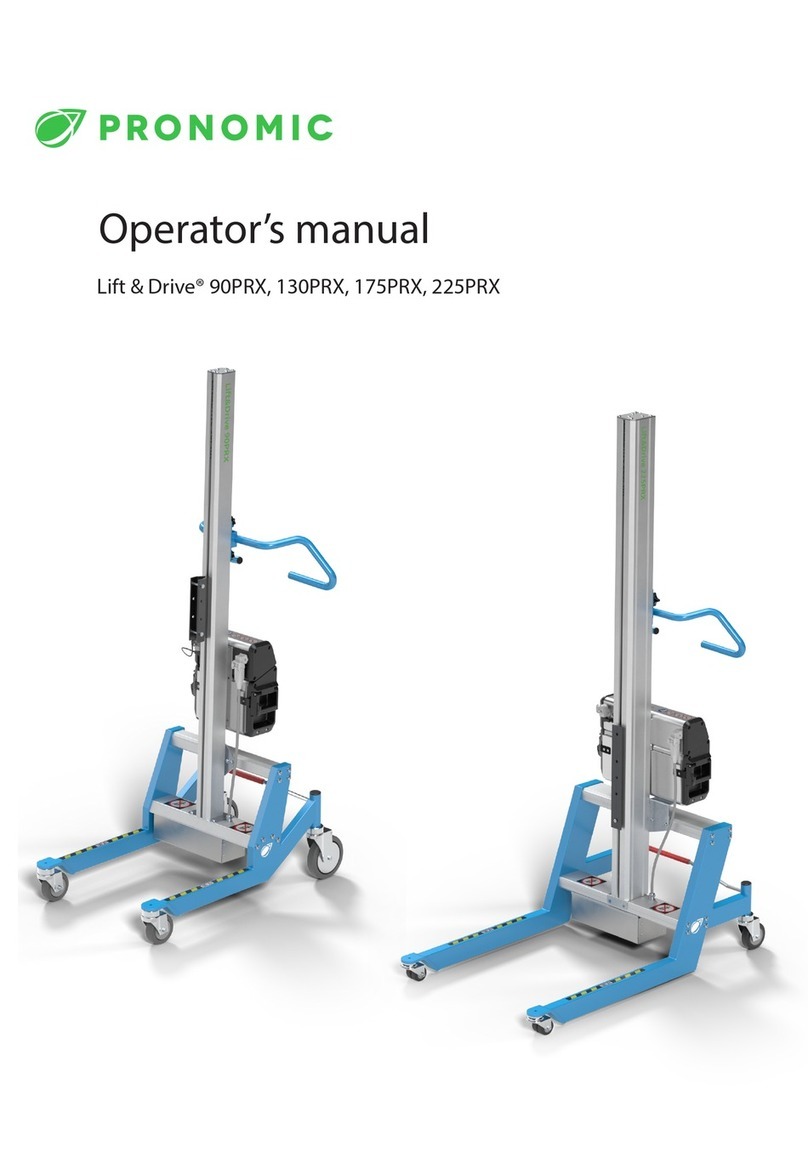
Pronomic
Pronomic Lift & Drive 90PRX Operator's manual
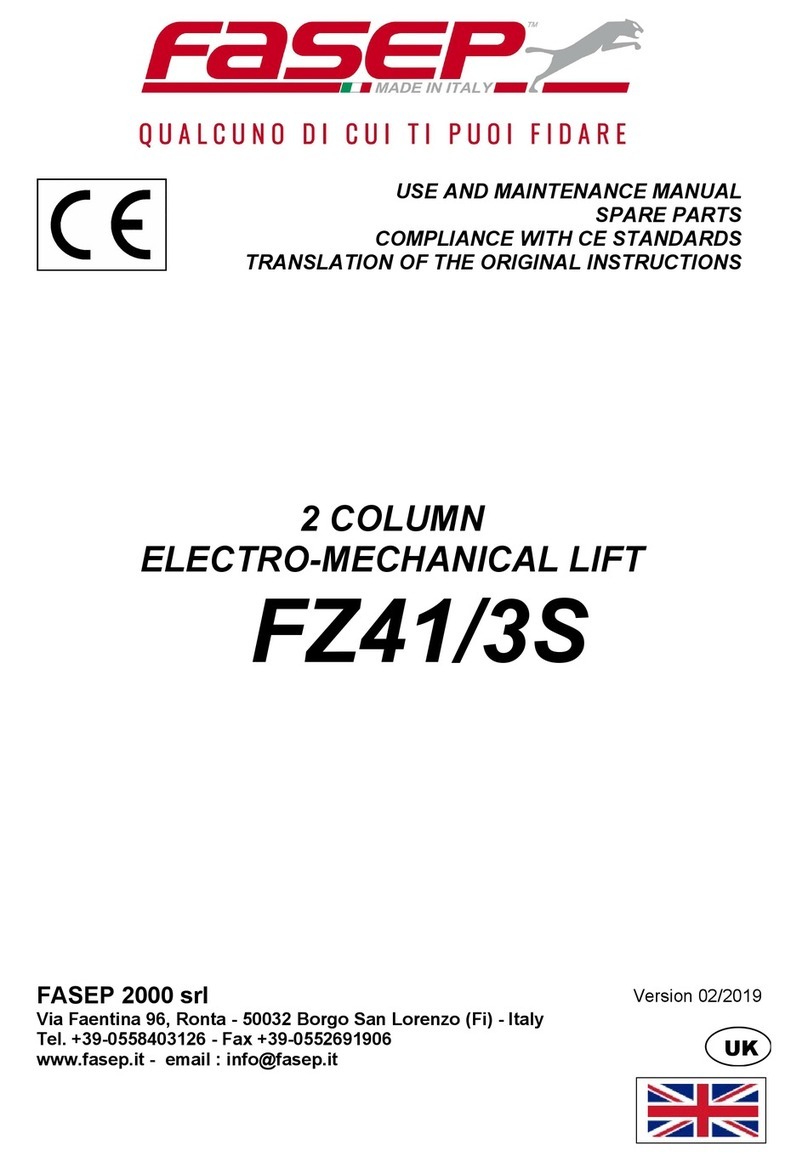
Fasep
Fasep FZ41/3S Use and maintenance manual, spare parts catalog

Amigo
Amigo Lift-All owner's manual
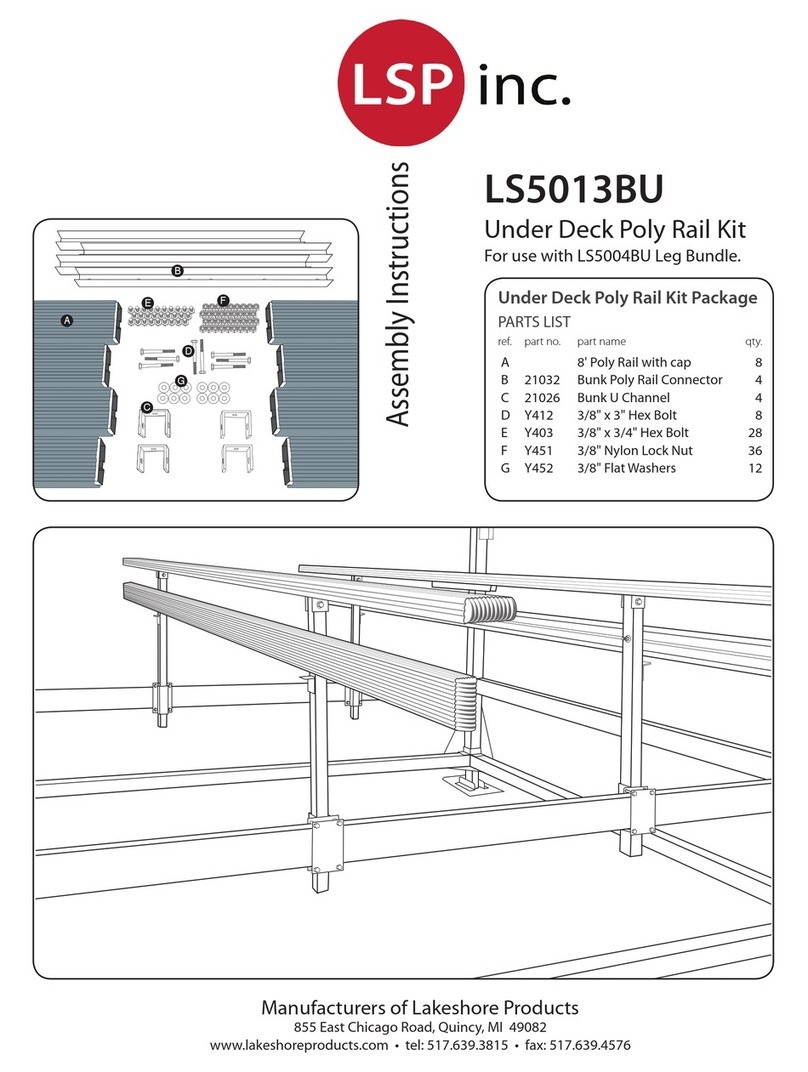
LSP inc.
LSP inc. LS5013BU Assembly instructions
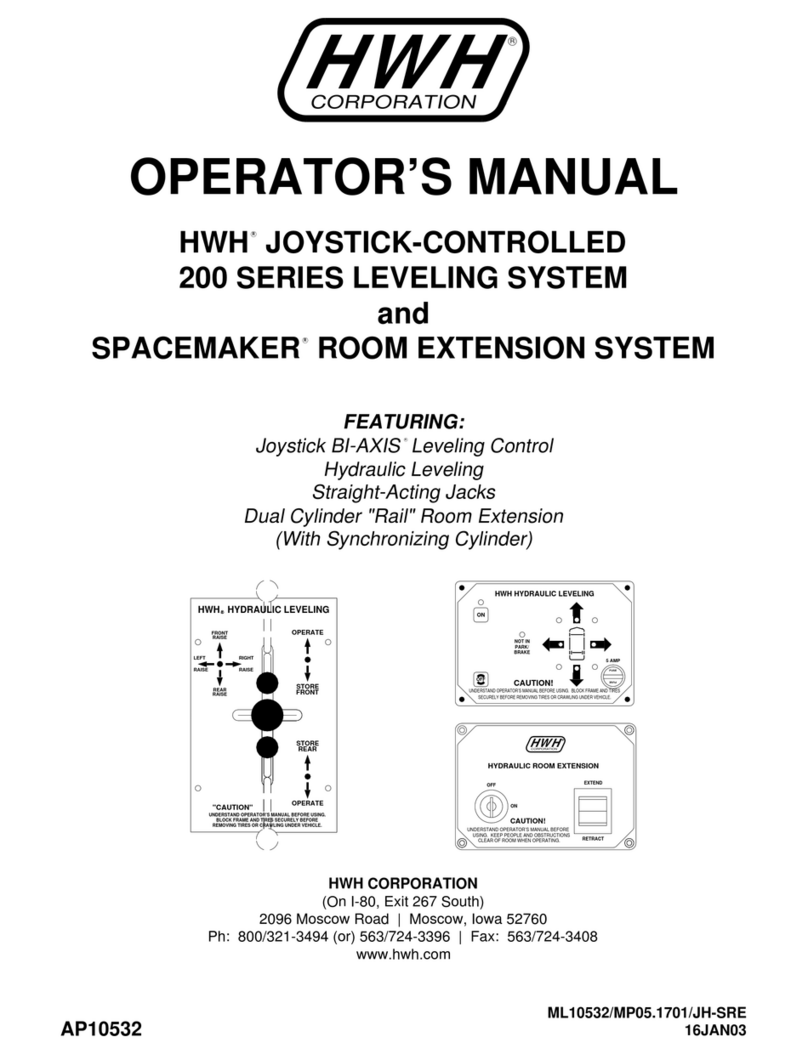
HWH
HWH 200 series Operator's manual

HIRD GLASS
HIRD GLASS KAPPEL HYDRAULICA 1200 CURVED Operator's manual
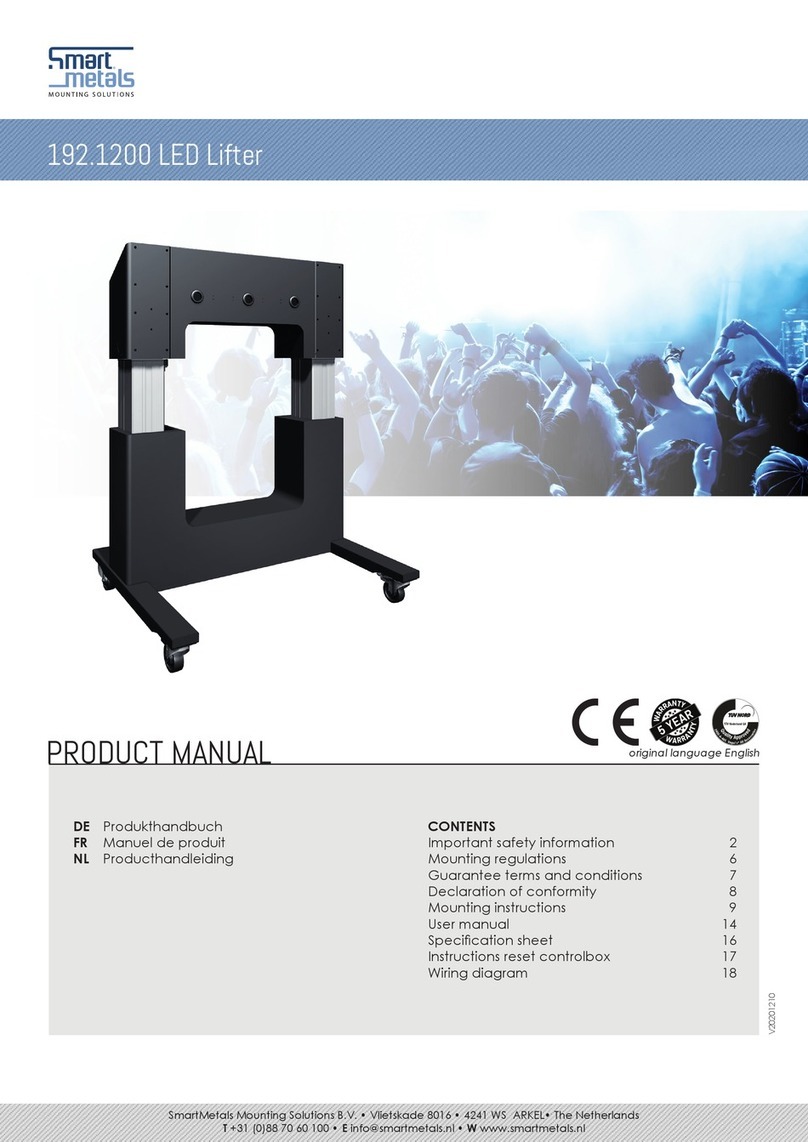
SmartMetals
SmartMetals 192.1200 product manual
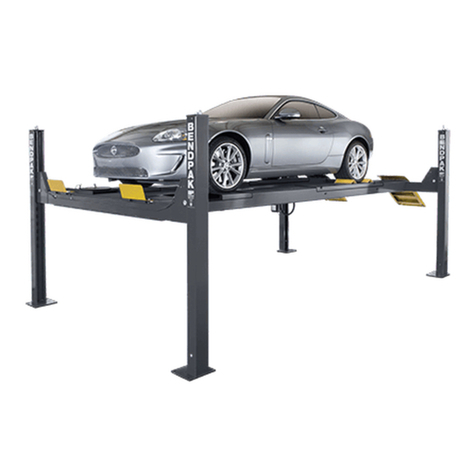
Bend-Pak
Bend-Pak HDS-14LSX Service manual

AQUA JOY
AQUA JOY junior saver operating instructions
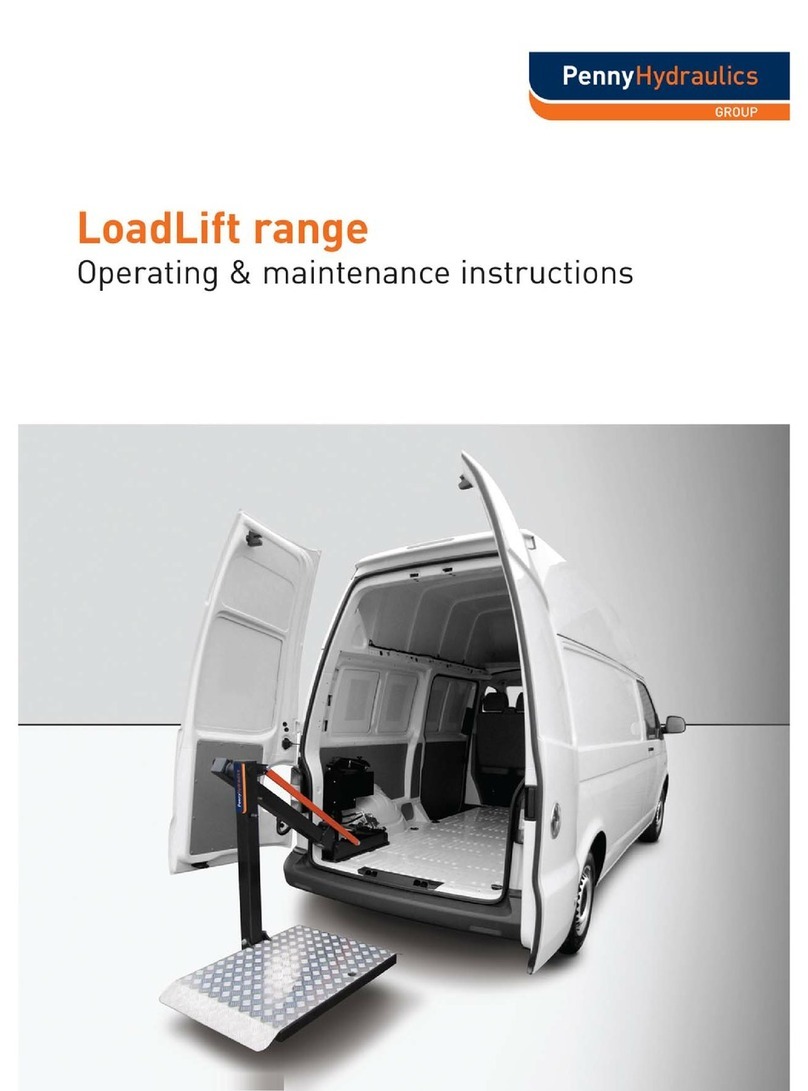
PennyHydraulics
PennyHydraulics LoadLift range Operating & maintenance instructions

Roadready
Roadready IntelliStage manual
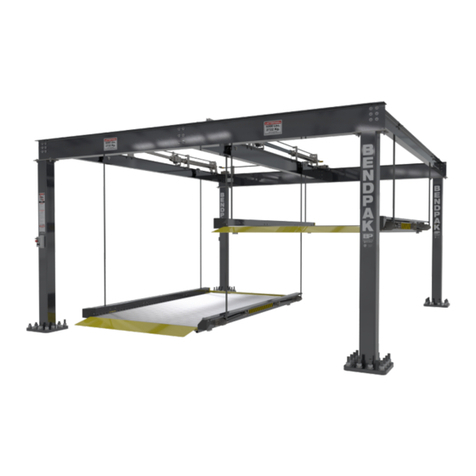
Bend-Pak
Bend-Pak PL-6KDT-S Installation and operation manual
